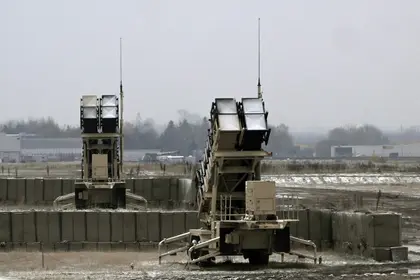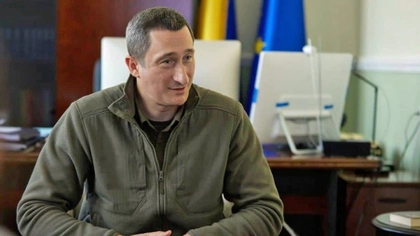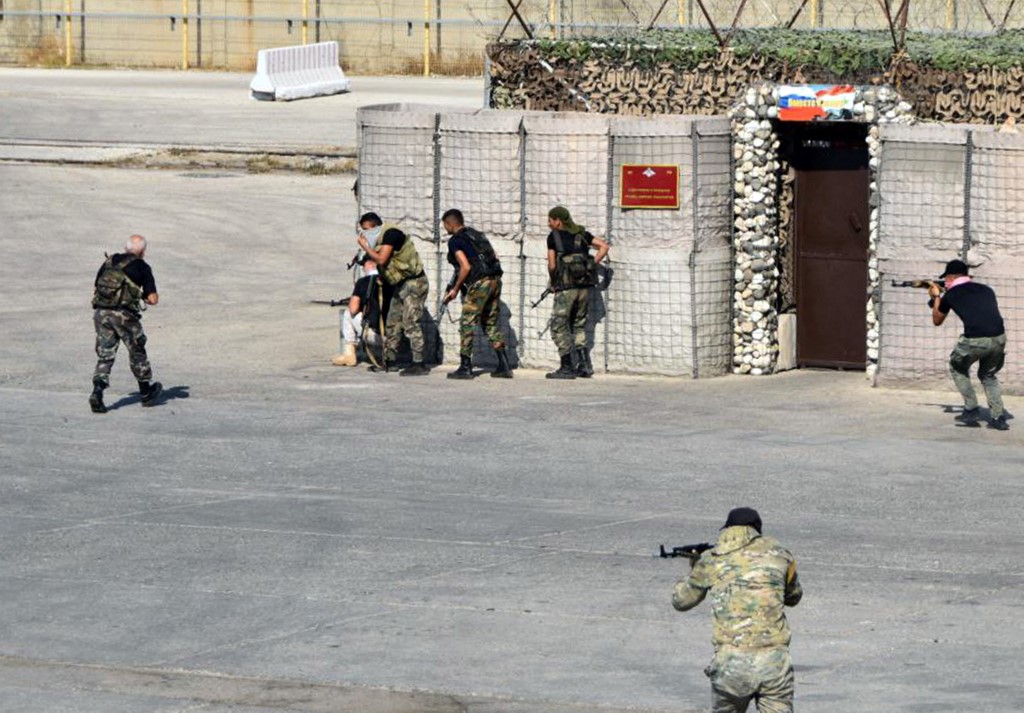Russian forces have opened a new attack axis in the Kremlin’s ongoing and so-far relentless Donbas offensive, launching assaults at the industrial city of Vuhledar and hitting Ukrainian defenses there with air strikes, artillery bombardments and massed armored assaults.
Ukrainian troops holding fortifications first built around the coal-mining center in mid-2022 and continuously improved since, on Monday reported being hit with a hurricane of carpet bombing strikes followed by frontal attacks by infantry riding armored transporters.
JOIN US ON TELEGRAM
Follow our coverage of the war on the @Kyivpost_official.
The Russian attacks were among the most intense and firepower-heavy in more than a year, the 72nd Mechanized Brigade unit Telegram channel reported on Monday.

One of the Armed Forces of Ukraine’s (AFU) most battle-tested formations, the 72nd Brigade, in February 2023 pioneered Ukrainian army tactics using heavy artillery strikes followed by massed FPV drones hunting down survivors to break up large-scale Russian attacks.

Kyiv Calls on NATO for 20 Advanced Air Defense Systems to Defend Power Grid
The successful defensive battles around Vuhledar marked the first time in the war that Ukrainian firepower stopped cold Russian tank and infantry fighting vehicle assaults kilometers before they reached Ukrainian positions. Since then, 72nd Brigade-manned fortifications and minefields around Vuhledar have repelled repeated Russian attacks.
However, according to pro-Russia milbloggers citing sources in attacking units, defenders in Vuhledar on Saturday and Sunday were unable to prevent Russian infantry from reaching and capturing long-held positions defending the industrial site Coal Mine Number One, to the northeast of the city.
By midday Monday, reports on which side controlled the factory premises were still conflicting, with some accounts saying room-to-room fighting was still in progress. All Ukrainian sources – including Ukrainian army official statements – reported Kremlin assaults on Vuhledar were being led with massed armored vehicle columns backed with unprecedented firepower.
“The beasts (Russian forces) are wiping Vuhledar off of the face of the Earth,” a Monday Ukraine army statement said.
“Today (Sunday) there was also pressure from the town Mykilskyi towards Vuhledar, and in some places they advanced. The city is being covered with Grad and Tornado [artillery missile] strikes and artillery bombardments from the direction of [the village to the southeast] Yegorivka. From the village Pavlivka [tanks and infantry fighting vehicles using cannon for] direct fire are rolled out and working over our positions. In general, the situation is difficult because of the amount of fire, it’s leveling everything,” Stanislav Bunyatov, a fighter with the neighboring AFU’s 24th Assault Battalion, reported in a Sunday blog post.
Situation map published by the military information platform TheWarInUkraine showing the direction of Russian assaults (red arrows) on Sept. 1. The Kyiv Post red circle graphic shows the city of Vuhledar.
Russian forces in early July kicked off a campaign of almost daily assaults to the west of the major Russia-controlled city of Pokrovsk. Although Kremlin troops suffered heavy losses they have advanced from 12 to 20 km (8 to 12 miles) in two months of fighting, pushing a salient into Ukrainian defenses.
Kremlin breakthrough in Vuhledar would create a pincer into Ukrainian lines parallel to the Pokrovsk salient, and capable of breaking the back of AFU attempts to hold in the Donbas region across a wide front, pro-Moscow “combat correspondent” Simon Pegov in a Monday report said.
“To the south (of Pokrovsk) the Vuhledar combat group has been committed to combat. Assaults are underway. If we (Moscow’s troops) take Vuhledar, the Armed Forces of the Russian Federation will enter a huge operational area without minefields and serious enemy fortifications, and will be able to approach the city of Zaporizhzhia,” Pegov wrote.
President Vladimir Putin in comments to state-controlled media on Monday in the remote south Siberian city of Tyva said that Russian assaults in the Donbas sector would continue and that their pace would accelerate.
“We are now capturing square kilometers of territory,” he said. “Russian forces are advancing at speeds that we have not seen in Donbas for a long time.”
Kyiv Post screen grab from graphic data published by the Icelandic military researcher Ragnar Gundarsson showing the track of Russian personnel casualties (white) and combat engagements (green) recorded by Ukrainian forces over time. Personnel losses are at a near all-time high for the war, and combat engagements are an all-time high, per that data.
General Oleksandr Syrsky, the Armed Forces of Ukraine (AFU) commander, on Sunday, visited frontline units defending in the Pokrovsk sector and met with men and officers of three combat brigades stationed there. In a statement, he said of the fighting there “The battles are extremely tough. The enemy is throwing into battle everything that can move and advance, and is trying to break through our troops’ defenses.”
Independent analysts reported recent, near-record losses of Russian troops and equipment and published new data suggesting that some of the most intense combat of the entire war was taking place in Ukraine’s east and north. According to a report published by the Baku-based military analyst Agil Rusamzade on Monday, overall across the front engagements over the past week spiked 24 percent.
Since Russia’s invasion of Ukraine in February 2022, the intensity of combat currently seen across the front in the past two to four days has been matched only three or four times in the entire war, data published by the Iceland-based military researcher Ragnar Gudmundsson showed.
Ukrainian MP Mariana Bezgula, an outspoken critic of Ukrainian army leadership and Syrsky in particular, in a Sunday statement, said the situation around Vuhledar is “desperate” and claimed that the army leadership focus on Pokrovsk to the north could lead to “disaster” for Vuhledar’s defenders. She called on Syrsky to send assistance to the “superheroes” in the 72nd Brigade.
AFU units were holding under heavy pressure “heroically,” and army leadership was moving reinforcements and supplies to back up defenses in sectors under pressure, Syrsky said in a Sunday official statement.
You can also highlight the text and press Ctrl + Enter








